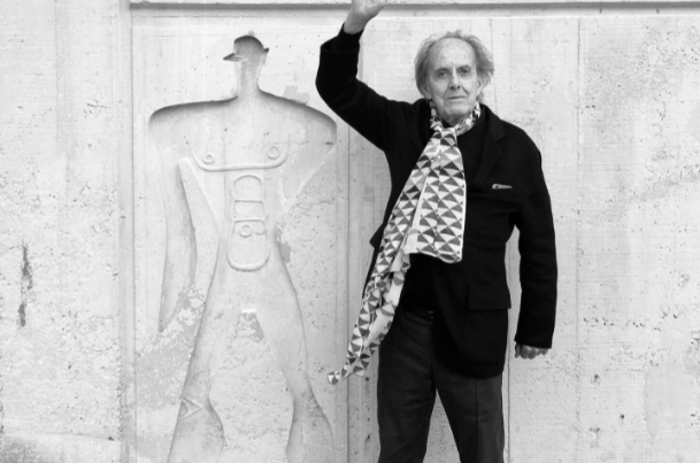CENTRE POMPIDOU ACQUIRES “THE BARRAGÁN ARCHIVES” BY JILL MAGID AND AWAKENS QUESTIONS ABOUT OWNERSHIP AND IDENTITY
The personal legacy of Pritzker Prize winning Mexican architect Luis Barragán (1902–1988) is mostly in Mexico, while his professional legacy is owned by a Swiss corporation. Magin’s endeavor flirts with copyright, exclusivity and heritage to question these very notions. Seven are the works within her investigative project that are now part of Centre Pompidou’s permanent collection. These include sculpture, installation, photography and drawing.

Seduced by infringement, Jill Magin’s conceptual framework encompasses the interdynamics of institutions and organizations, at the same rate that it utilizes law as a touchstone for what can be seen but not explored, commented but not actually shared. In this manner, The Barragán Archives stands for a visual tool in the redefining of what authority and authorship mean in relation to the binomial of individual/collective. To own, to represent, to have access to… who gets what and which are the criteria? And most of all, how is all of this connected to identity?
-
Dearest Federica, 80 Slides, projector, sound, furniture after Luis Barragán, 2013
-
The Body (of Work), 2016, Low sabino table after Luis Barragán, slide carousel with 80 slides, framed book, 31.5 x 41 x 4.7cm (12.5 x 17.5 x 2inches)
-
Mujer con Sombrero, installation view, Museo MAZ, 2014
-
Las Arboledos Junction. Bookframe, 2013.
-
The Proposal, 2016. 2.02 carat, blue, uncut, diamond with the micro-laser inscription "I am wholeheartedly yours," silver ring setting, ring box, related documents.
An interesting factor, which sheds light on the arbitrary aspects of freedoms and limitations, is how the project unveils itself depending on its context of exhibition. Thus presenting “opportunities to push the narrative forward, and reflect —within the work— the legal parameters of the country”(artist statement).
Moreover, the dissection of Barragán’s legacy into “personal” and “professional” forces a breach with seemingly clear perimeters but which leaves a vacuum as to where art stands in. Where does art stop being personal to become professional?
-
Ex-Voto: Miracle of the Diamond, 2016, Oil on tin, 9.84 x 4.59 x 3.46cm (3.87 x 1.81 x 1.36inches), Painted by Daniel Vilchis
-
Ex-Voto (Installation view), LABOR, 2016
-
The Archivist Vitrine, 2016. Vitrine, facsimile of the Proposal Letter to Federica Zanco (4 pages.) 89 x 54.5 x 247 cm
-
Jill Magin. Woman With Sombrero. Der Trog (Detail). Model, 2013
-
Der Trog, detail. ART BASEL PARCOURS - Museum Kleines Klingental Kleines Refektorium - Curated by Florence Derieux - June 2013
Born in Connecticut, Jill Magid currently lives and works in Brooklyn, NYC. She has built her career around an investigative and highly critical approach to engaging with power and authority structures. Backed by her characteristic astuteness and powers of persuasion, she has managed to enter mechanisms generally seen as impenetrable, such as surveillance systems, secret services or the police. Through her work, she offers a deep exploration of the tensions existing between individuals and institutions, between what remains hidden and what is known, among other dualities that govern –sometimes in a subtle way– our reality as individuals and as a society.





